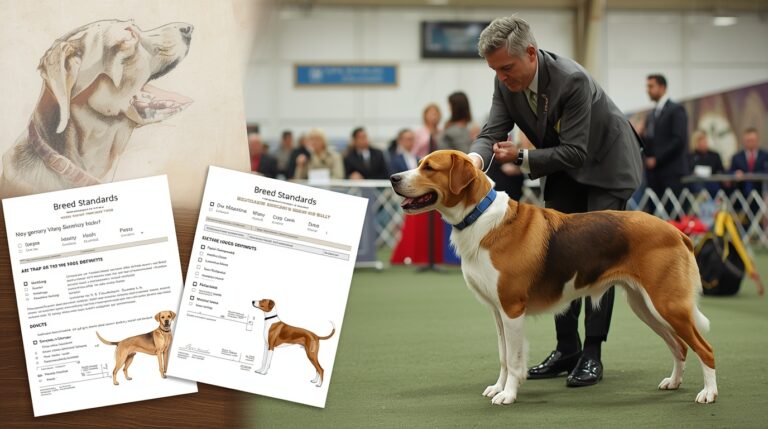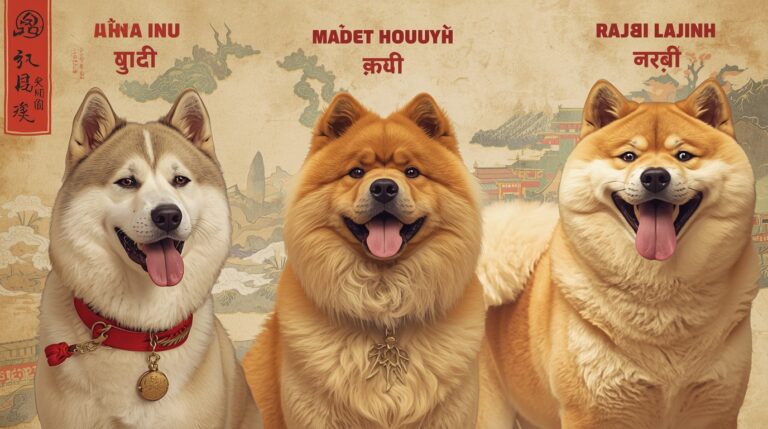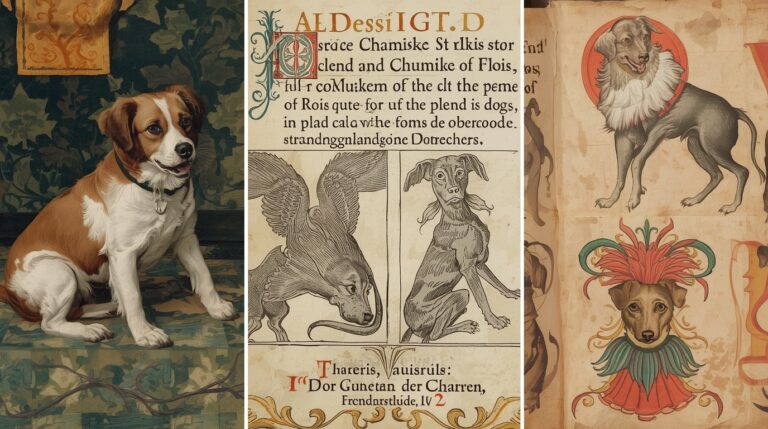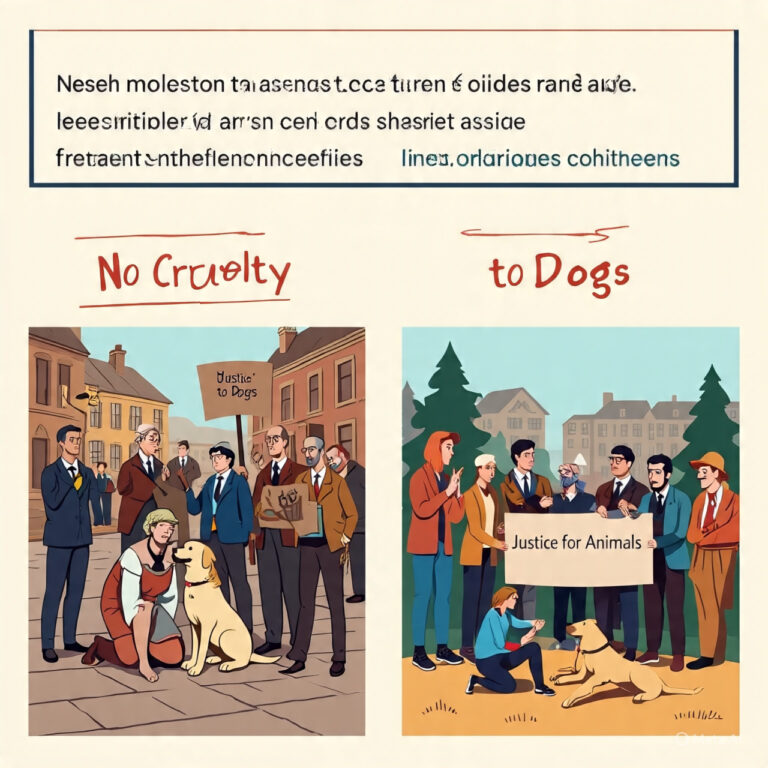Dogs in Hinduism and Buddhism
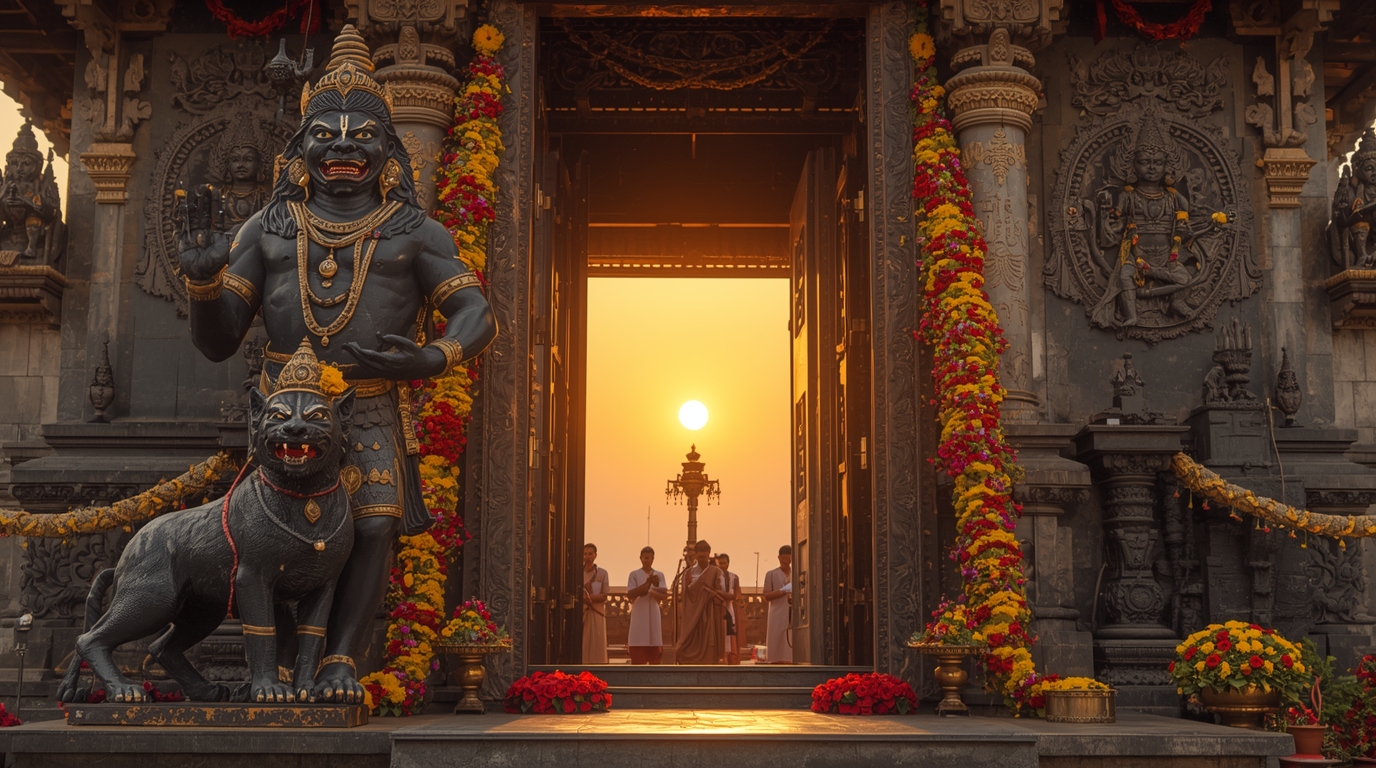
Introduction
In both Hinduism and Buddhism, dogs hold complex, multifaceted roles—spanning from sacred protectors and divine companions to symbols of loyalty, dharma, and karmic consequence. While not always deified, dogs are deeply embedded in mythological stories, religious practices, and philosophical teachings, particularly in their roles as guardians of truth, guides to the afterlife, and metaphors for the disciplined mind.
This article explores the spiritual significance of dogs in Hindu and Buddhist traditions, examining ancient scriptures, divine iconography, reincarnation beliefs, and modern devotional practices that underscore the importance of canines in the spiritual imagination of South and East Asia.
Dogs in Hinduism: An Overview
In Hinduism, dogs are revered and reviled in equal measure. They symbolize fierce protection, loyalty, and vigilance, but are also associated with death and impurity, particularly in Vedic contexts. This duality reflects Hinduism’s deeply nuanced cosmology, where every being—regardless of perceived status—has a role within dharma and samsara (the cycle of birth, death, and rebirth).
While some scriptures describe dogs as guardians of the afterlife, others depict them as outcasts. Still, many Hindu deities are closely associated with dogs, elevating their spiritual standing beyond that of common animals.
Shiva’s Companion: The Dog of Bhairava
One of the most revered manifestations of dogs in Hinduism is through Bhairava, a fierce and protective form of Lord Shiva. Bhairava is often shown riding or accompanied by a black dog, which serves not only as his vahana (vehicle) but also as a symbol of his omnipresence over death, time, and dharma.
The black dog of Bhairava is not just a beast of burden—it represents watchfulness, devotion, and the ability to see through illusion (maya). In Shakti temples, Bhairava is the guardian deity, and his dog is venerated with equal seriousness, receiving offerings of milk, bread, and vermillion.
Devotees often feed black dogs on Kaal Bhairav Ashtami, believing it appeases Bhairava and protects them from misfortune and evil spirits.
Dattatreya and His Four Dogs
Another divine figure closely associated with dogs is Dattatreya, an incarnation of the Trimurti—Brahma, Vishnu, and Shiva. In iconography, Dattatreya is always depicted with four dogs and a cow. The four dogs represent the four Vedas—Rig, Sama, Yajur, and Atharva—symbolizing that even the sacred scriptures can manifest through humble forms.
These dogs are not mere animals but divine emblems of spiritual knowledge, loyalty, and guidance. Dattatreya’s presence alongside the dogs conveys the message that divine truth is omnipresent and can be communicated through even the simplest beings.
Yama: The God of Death and His Canine Guardians
In Vedic and Puranic traditions, Yama, the god of death, is often accompanied by two four-eyed dogs, named Shyama and Sabala. These supernatural hounds guard the path to the underworld (Naraka) and serve as scouts for souls nearing death.
Mentioned in the Atharva Veda, these dogs are invoked in funerary mantras to guide the soul safely and to prevent malevolent entities from intercepting the journey. Their four eyes symbolize their ability to see both spiritual and physical realms, making them true psychopomps in the Hindu mythos.
Sarama: The Divine Dog of the Rigveda
In the Rigveda, the earliest layer of Vedic texts, a divine hound named Sarama plays a prominent role. She is sent by the gods to retrieve their stolen cattle, symbolizing divine order and the recovery of dharma.
Sarama is revered as a celestial messenger, a hound of truth and tenacity. In some interpretations, she is the mother of all dogs, rooting the domesticated canine lineage in divine origins. Though her role is brief, it demonstrates the spiritual trust placed in the dog’s instinct and loyalty.
Dogs and Dharma in the Mahabharata
One of the most powerful and spiritually significant episodes involving a dog occurs in the Mahabharata, when King Yudhishthira embarks on his final journey to Mount Meru, the abode of the gods. Accompanied by a faithful dog, he loses his brothers and wife along the way.
Upon reaching the gates of heaven, Indra invites him in but forbids the dog’s entry. Yudhishthira refuses, stating he cannot abandon a loyal companion. In the end, the dog reveals itself as Dharma in disguise, testing Yudhishthira’s virtue.
This narrative solidifies the dog as an embodiment of righteousness, loyalty, and divine presence—virtues central to the Hindu ethos.
Festivals and Rituals Honoring Dogs
In Nepal, a deeply spiritual Hindu-Buddhist country, Kukur Tihar (part of the larger Tihar/Deepawali festival) is celebrated by honoring dogs as guardians, companions, and divine agents.
On the second day of Tihar, dogs are adorned with flower garlands, vermilion tilak, and offered ritual food. This celebration acknowledges their loyalty and their role in both the physical and spiritual safeguarding of homes.
This ritual echoes Bhairava’s veneration, reinforcing the sacred bond between humans and dogs in daily and cosmic life.
Dogs in Buddhist Thought and Literature
Unlike Hinduism, Buddhism does not feature dogs prominently in its canonical texts, but it recognizes their sentience and includes them in the broader ethos of compassion and karmic continuity. In Buddhist philosophy, all beings—including dogs—are capable of achieving liberation (nirvana) through the accumulation of good karma.
In Jataka tales and folk legends, dogs often appear as reincarnated monks, guardians of relics, or devotees of the Buddha in previous or future lives. These stories emphasize that behavior and intention—not species—determine one’s spiritual trajectory.
Buddhist Vinaya Rules and Dogs
The Vinaya Pitaka, which outlines monastic discipline, includes specific rules for monks regarding animals, including dogs. While monks are instructed to maintain detachment, they are also forbidden from harming animals. In practice, this has led to many monasteries caring for stray dogs, particularly in Sri Lanka, Thailand, and Tibet.
This compassionate treatment aligns with the Buddhist precept of ahimsa (non-violence) and reflects the belief that dogs may be sentient beings in transitional rebirth, deserving of kindness and respect.
Buddhism, Karma, and Rebirth as Animals
In Buddhist cosmology, beings may be reborn as animals, including dogs, due to past karmic actions. However, this is not a punishment but part of the cycle of samsara, from which any sentient being can ultimately escape.
A dog’s birth may result from attachment, ignorance, or loyalty taken to extremes—but it also offers opportunities for learning and growth. Buddhist teachings hold that one should treat all beings equally, regardless of their current form, as each has the Buddha-nature within.
Dogs in Buddhist Folklore and Parables
Many Zen and Mahayana stories include dogs as metaphors for spiritual lessons. In one tale, a monk asks, “Does a dog have Buddha-nature?” to which the answer is “Mu” (nothingness)—a cryptic response pointing to the illusory nature of distinctions.
Another parable from Tibetan Buddhism tells of a lama reincarnated as a village dog, maintaining his presence and offering teachings through protective behavior and symbolic acts.
Such stories challenge the reader to see beyond form, emphasizing that awakening is not limited to humans or exalted beings.
The Dog as a Symbol of Dharma and Watchfulness
Dogs are often cited in Buddhist analogies as symbols of mindfulness and protection. Just as a guard dog stays alert, so too must the practitioner stay vigilant over thoughts and actions. This metaphor appears in Zen literature, where the mind is to be trained like a loyal dog—alert, calm, and obedient to higher wisdom.
In some Theravāda monasteries, dogs are believed to act as protective spirits, barking at intrusive energies or disturbances during meditation sessions. Whether real or symbolic, the dog’s presence becomes part of the monastic atmosphere.
Dogs and the Tibetan Buddhist Tradition
In Tibetan Buddhism, dogs are frequently found near monasteries, and local traditions speak of tulkus (reincarnated lamas) who chose to return in canine form. These dogs are cared for by monks and are sometimes believed to possess spiritual insight, protecting relics or warning monks of impending misfortune.
In Tibetan iconography, dogs may also appear at the feet of protector deities, symbolizing loyalty, ferocity, and divine guardianship. Though not always deified, these dogs serve as spiritual intermediaries, deserving of honor and ritual care.
Comparing Hindu and Buddhist Attitudes Toward Dogs
Hinduism and Buddhism both respect dogs, but from different theological frameworks. Hinduism assigns divine roles to dogs—such as companions of gods and guardians of cosmic order—while Buddhism emphasizes their sentience, karmic journey, and potential for liberation.
In both traditions, dogs represent loyalty, protection, and the human-animal spiritual bond. They serve as teachers of virtue—whether it’s Yudhishthira’s dog representing dharma, or a reincarnated dog displaying enlightened behavior.
Modern Devotion and Ethical Treatment of Dogs
Today, many spiritual organizations in India and Nepal integrate dog care into their religious service. Ashrams and monasteries offer food and shelter to strays, viewing the act as a form of seva (selfless service).
Groups like ISKCON and animal welfare NGOs promote the idea that caring for animals—including dogs—is a path to spiritual merit. This evolving attitude reflects a growing integration of ancient reverence with contemporary compassion.
Dogs in Eastern Iconography and Temple Art
Dogs appear in murals, statues, and carvings throughout South and Southeast Asia. Kaal Bhairava temples often feature stone dogs at entrances. In Buddhist monasteries, dogs may be carved into doorways or walls as subtle protectors of sacred space.
These depictions not only reinforce the dog’s sacred role but also serve as constant reminders of alertness, loyalty, and the eternal presence of dharma.
Dog Symbolism in Meditation and Philosophy
In Eastern meditation texts, the dog’s watchfulness and single-pointed focus are used to illustrate samadhi (deep concentration). Yogic traditions sometimes reference dogs to emphasize non-attachment, highlighting how even a loyal dog lets go of its master in death—a reminder to surrender ego and illusion.
In Zen, the bark of a dog can be a koan—a shock to consciousness that breaks through mental habits. This philosophical use of canine imagery elevates dogs from mere animals to spiritual metaphors.
Misconceptions and Clarifications
A widespread myth suggests that dogs are unclean in Hinduism, yet scriptures, folklore, and art contradict this. While dogs may be associated with impurity in some caste-based customs, they are also venerated in rituals, epics, and by deities.
In Buddhism, too, misconceptions exist about rebirth as a dog being a punishment. Instead, Buddhist texts teach that every life form holds potential for awakening, and no birth is inherently bad.
Conclusion
From the fierce black dogs of Bhairava to the gentle canine accompanying Yudhishthira, and from the guardians of Yama’s realm to Buddhist monasteries honoring strays, dogs hold a special, enduring place in the spiritual consciousness of Hinduism and Buddhism.
They symbolize loyalty, spiritual vigilance, karma, and divine protection—teaching us not only about the sacredness of all life but also about the values of compassion, truth, and unwavering devotion. As these traditions continue to evolve, so too does our reverence for the humble dog—a spiritual companion in both life and beyond.

